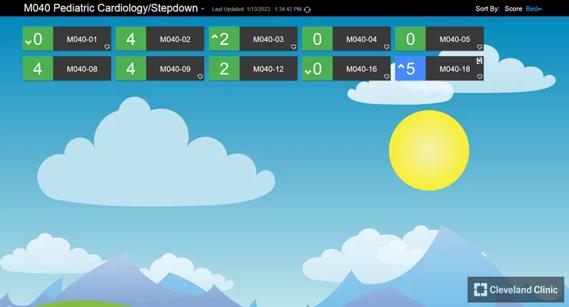A physician-developed experiential learning elective illustrates the value and necessity for strong collaboration among clinicians and IT professionals

Enhancing patient care with digital tools is nothing new. But clinical input can make these tools even more efficient.
Cleveland Clinic is a non-profit academic medical center. Advertising on our site helps support our mission. We do not endorse non-Cleveland Clinic products or services. Policy
Bridging the gap between clinical input and technical advancements is the field of clinical informatics. Clinical informatics involves collaboration between healthcare and information technology professionals to optimize information and communication systems at all levels. These improvements and innovations can improve patient care and health outcomes and strengthen the clinician-patient relationship.
Yet, clinical informatics training is often overlooked.
“Because medical school curriculum doesn’t typically include clinical informatics, digital tools are underutilized, misunderstood and often ignored by clinicians,” says Allison Weathers, MD, FAAN, a Cleveland Clinic neurologist and an Associate Chief Medical Information Officer. “Broader education is imperative to keep pace with the evolution of technology and healthcare.”
To address this knowledge gap, Cleveland Clinic offers a Clinical Informatics elective for residents and fellows.
“Clinical informatics is much more than documenting in the electronic medical record,” says Joe Zein, MD, PhD, MBA, a Cleveland Clinic pulmonologist and researcher. “While today’s technological advancements have improved access to information, efficiency and safety, there is an escalating demand for technology to support healthcare’s increasing complexity. This elective is designed to meet those needs.”
The elective’s curriculum focuses on integrating medicine and information technology through applied computing, information management and using clinical data to drive quality care improvements and advance clinical research. Dr. Weathers and Dr. Zein serve as physician leads for the elective.
“Experiential learning makes this elective unique for each participant,” says Dr. Weathers. “Beyond the traditional teaching methods, the trainee shadows our informaticists, participates in information technology forums and networking, has designated mentors and completes a project. This immersive, multidisciplinary experience elevates the importance of clinical informatics by making the work more applicable to clinical practice.”
This personalized experience demonstrates how the trainee’s knowledge directly contributes to helping shape digital solutions that efficiently and effectively impact care delivery.
Cleveland Clinic internal medicine resident Navin Pathak, MD, recently completed the elective.
Dr. Pathak shares, “Technology will have an ever-increasing role in day-to-day medicine. Building tools without clinical expertise can be limiting. There’s growing importance for physician involvement to prevent these pitfalls.”
Prior to his medical training, Dr. Pathak was an interface engineer for a healthcare company.
“From my experience as a developer, I realized that informatics-trained physicians are needed to effectively build the technology affecting caregivers and patients,” Dr. Pathak explains. “As a designer, I was making clinical recommendations based on how I thought the designed workflow would improve clinical efficiencies, but that certainty only comes from doing the actual work in the clinical setting and knowing how to adapt the technology to fit those needs.”
Working with their mentors and tailored to their clinical interests, the trainee identifies a project to complete during their elective.
For Dr. Pathak’s project, he partnered with Cleveland Clinic systems analyst Beata Earl to test and validate critical updates to an existing calculator designed to identify hospitalized patients who are at higher risk of developing venous thromboembolisms (VTEs) — one of the leading causes of preventable hospital deaths.
“Several years ago, Cleveland Clinic researchers developed a novel algorithm to create a calculator that determined a patient’s VTE risk factor.” Dr Pathak continues, “Recent updates to the algorithm required testing and validating to ensure the new calculator and associated functionality worked as expected while gauging the user’s perspective.”
Dr. Pathak adds, “Testing and validating are vital knowing that clinicians are relying on this functionality to provide earlier interventions for high-risk patients, and ultimately, to save lives.”
“Dr. Pathak’s efforts were instrumental in updating an automated tool that impacts every admission across our health system — that’s thousands of patients a day,” says Dr. Weathers. “This significant accomplishment is a direct link to the intended benefit of integrating clinical knowledge and technology to deliver better, safer care.”
“The functionality and usability of data is transforming patient care,” Dr. Zein adds. “Research advancements are making progress toward customized, personalized recommendations for a specific patient based on their medical history. Similarly, genomic data is identifying which patients will get certain medications. Increasing physicians’ understanding and awareness is essential to accelerate this important work.”
This kind of impact has inspired Dr. Pathak to explore opportunities for continuing this kind of work.
“This experience has piqued my interest to pursue an informatics fellowship,” says Dr. Pathak. “From working with my mentors and interacting with the varying disciplines, I know there is so much potential to streamline technology into clinical practice. This influential work impacts every facet of healthcare, including research. I want to be part of creating these valuable tools.”

Cleveland Clinic’s roadmap to recovering critical digital assets stems from strategic planning and preparedness

The Friends of Cybersecurity program bridges innovative technology solutions with mitigating security risks

Protecting patient data and privacy while preventing unnecessary risks

The infant fever care path is an interactive, step-by-step tool within the electronic health record that reduces high variability among standard practices to ensure safe, quality care at all Cleveland Clinic locations

Cleveland Clinic providers shifted to one-click ordering to simplify the workflow while increasing visibility of patient-specific recommended wellness screenings

Cleveland Clinic Children’s implemented an automated color-coded system to escalate timely care to prevent patient deterioration

Advancing Cleveland Clinic’s clinical systems integration by creating a secure, single database designed and built to modern healthcare standards

When the COVID-19 pandemic delayed patient care, automated bulk ordering for overdue screening mammograms led to an easy, convenient online scheduling process.